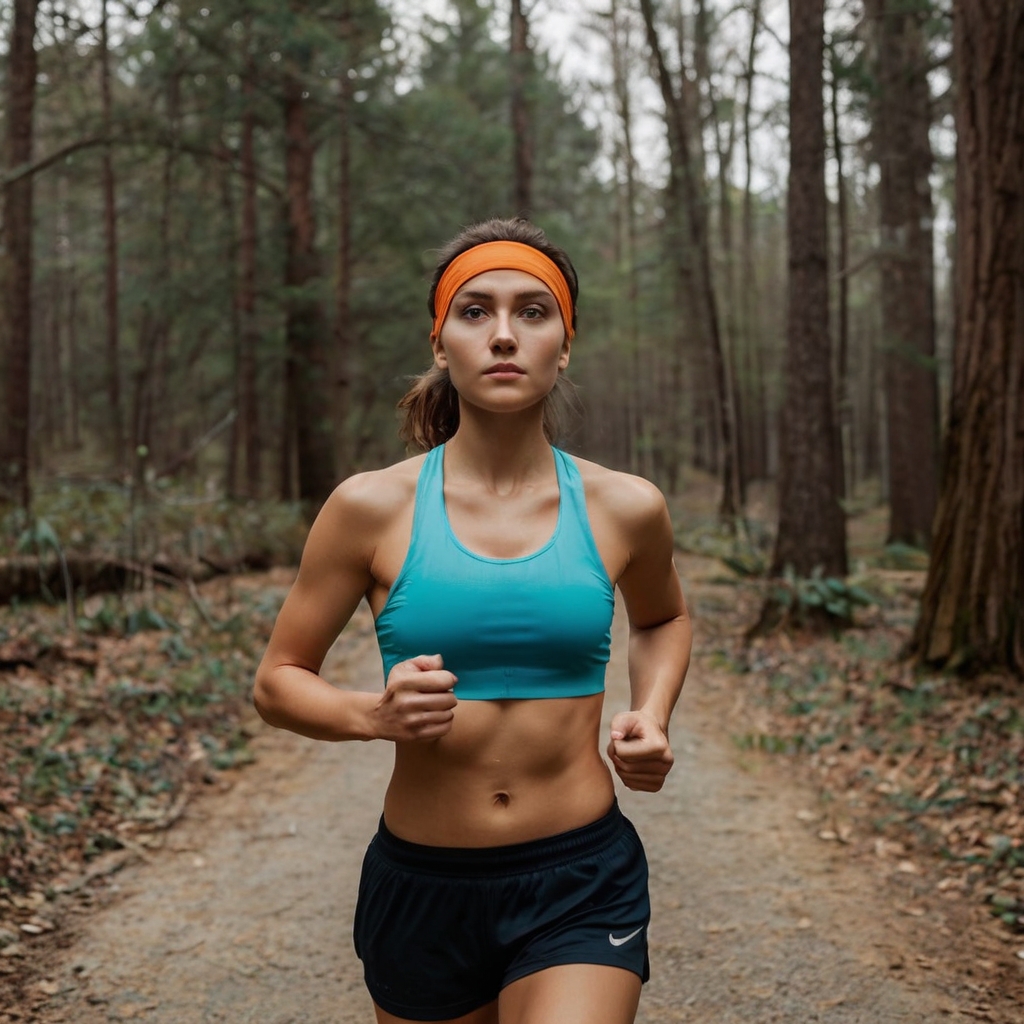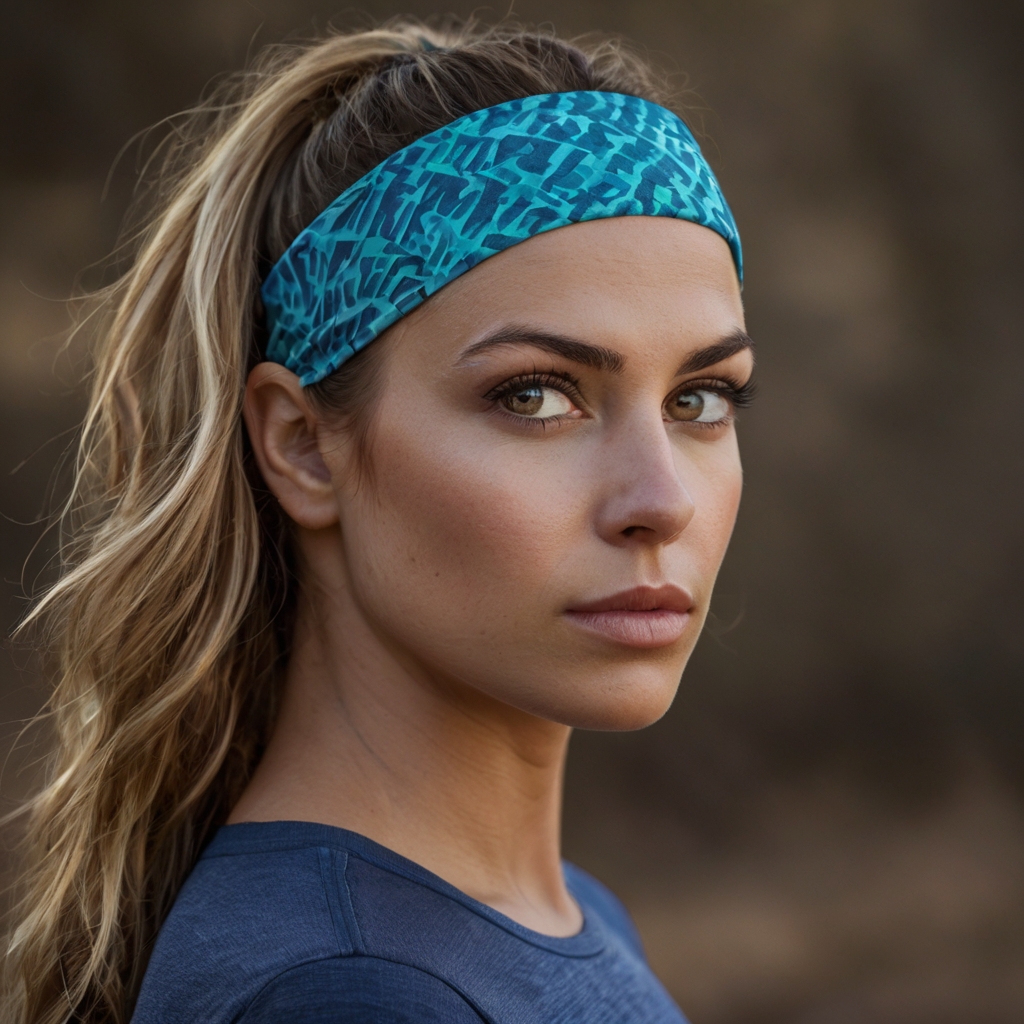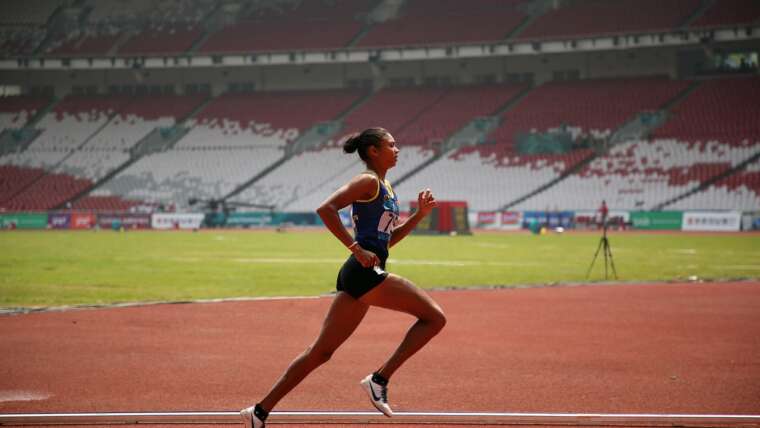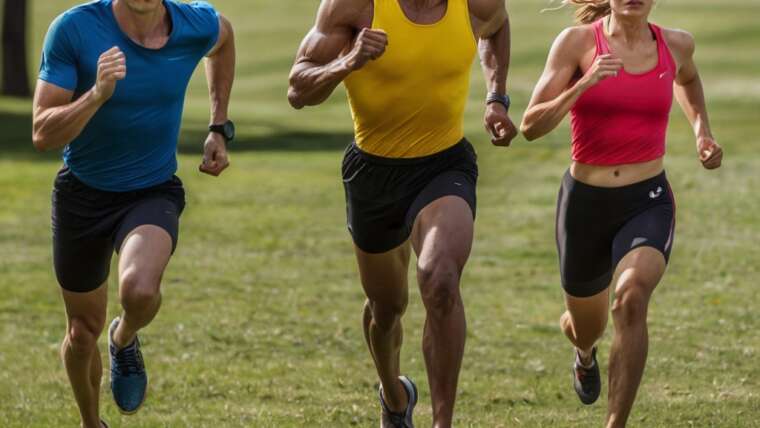Serious runners consider headbands their small but mighty must-have accessories. Most athletes pay attention to shoes and performance wear, yet these unassuming gear pieces solve running’s most frustrating challenges.
Quality workout headbands help runners overcome common distractions that disrupt their training focus. A well-designed headband serves multiple purposes beyond keeping hair away from your face – it pulls sweat away before reaching your eyes so you can stay focused on your performance. On top of that, ear-warming headbands protect you through winter months, and wider styles shield your scalp from summer sun’s harsh rays.
The perfect workout headband will raise your fitness game and keep you comfortable while adding style to your routine. This piece covers everything from sweat-wicking options to specialized winter gear, whether you need a men’s headband with superior moisture control or a women’s version that stays put during intense workouts. Athletes who know every second matters treat these gym headbands as performance tools, not just accessories.

Table of Contents
- 1 What Makes a Running Headband Essential for Serious Runners
- 2 8 Best Running Headbands in 2025
- 2.1 1. Best for Cold Weather: Smartwool Thermal Merino
- 2.2 2. Best for Men: Poshei Men’s Headband
- 2.3 3. Best Adjustable: Nike Dri-Fit Head Tie
- 2.4 4. Best Wide Fit: Alo Yoga Airlift
- 2.5 5. Best for Breathability: JUNK Big Bang Lite
- 2.6 6. Best Non-Slip: Buff CoolNet UV
- 2.7 7. Best for Thin Hair: Nike Swoosh Headband
- 2.8 8. Best for Maximum Coverage: Blom Original Headband
- 3 How to Choose the Right Running Headband
- 4 Hidden Features Runners Often Overlook
- 5 Expert Tips from Runners Who Tested Them
- 6 Summing all up
- 7 Here are some FAQs about how to choose a running headband:
What Makes a Running Headband Essential for Serious Runners
Small distractions can affect a serious runner’s performance by a lot. A running headband helps athletes tackle several everyday challenges. These functional tools are a great way to get better running efficiency for dedicated athletes.
Keeps sweat and hair out of your face
Runners know the frustration of stinging, burning sweat dripping into their eyes during a run. Basic headbands get saturated and fail, letting sweat drip and blur vision. Many runners break their stride and focus by wiping their foreheads with shirt sleeves.
Advanced design features make quality running headbands effective. Some models use innovative “sweat seal” technology that channels moisture away from your face. The moisture-wicking fabrics pull sweat away from the body and let it evaporate instead of running down your forehead.
Runners with longer hair get double benefits from these headbands. They keep loose hair from becoming distracting during intense workouts. GGR senior editor Erin Chancer confirms, “It works great at keeping sweat and hair out of my eyes during workouts”. People with shorter hair find them useful too, especially while growing out their style.
Improves focus and comfort during long runs
Salt stinging your eyes or loose hair in your face becomes a real problem several kilometers into a humid tempo session. Quality headbands create a “performance buffer”. Runners can stay focused on their rhythm, breath, and terrain instead of dealing with constant discomfort.
The benefits become clear during interval training or speed work. Your pacing stays consistent without sweat or hair disruptions, particularly in hot, humid conditions. Personal trainer Anthony O’Reilly tested the Poshei Men’s Headbands and found they “stayed on, did their job of keeping sweat out of my eyes, and was comfortable”.
These headbands do more than control sweat. Seamless construction eliminates friction points and provides smooth comfort on longer runs. The lightweight, breathable materials keep your forehead cool even in intense heat.
Protects against weather conditions
Running headbands work well in every season. Thermal or fleece-lined versions keep your ears and forehead warm in winter while letting heat escape from your head’s top – unlike stuffy hats. This balanced temperature control helps during cold-weather training.
Summer running creates different challenges. Some running headbands provide UV protection along with sweat management. The Buff CoolNet Headband offers UPF 50 sun protection while controlling hair.
These headbands shield you from wind and light rain. Wind-resistant fabrics block cold air and maintain stable body temperature. Water-repellent materials keep your head dry by deflecting water away from your face and eyes in wet conditions.
Modern running headbands have become essential gear throughout the year. You can wear them scrunched to handle sweat and hair, or flat for extra protection in cold weather. They help you stay focused on your performance whatever the weather throws at you.
8 Best Running Headbands in 2025
This curated list shows the best running headbands you can buy in 2025. We’ve dissected countless options to help you find the perfect headband that works for your needs, from freezing winter trails to hot summer marathons.
1. Best for Cold Weather: Smartwool Thermal Merino
The Smartwool Thermal Merino Reversible Headband is a game-changer for cold-weather runners. Its 100% Merino wool construction naturally controls temperature and pulls moisture away from your skin. The double-layer interlock knit gives you amazing insulation without the bulk, which makes it perfect for winter running.
You’ll get two headbands in one thanks to its reversible design. The clean-finish seams create a sleek fit that sits comfortably under helmets or beanies when you’re switching between sports. The Merino wool naturally fights odors, so you can knock out several cold-weather workouts before needing to wash it.
2. Best for Men: Poshei Men’s Headband
Poshei Men’s Headband stands out as a budget-friendly, versatile choice that comes in neutral color packs. The blend of 95% polyester and 5% spandex gives you great stretch while pulling sweat away effectively.
These headbands are perfect for guys growing out their hair through those awkward “in-between” phases. The soft, breathable fabric stays comfortable all day long, making it great for construction workers and outdoor enthusiasts. Athletes love how well these fit under helmets for sports like football, lacrosse, and cycling.
3. Best Adjustable: Nike Dri-Fit Head Tie
Nike’s Dri-Fit Head Tie fixes the “one-size-fits-all” issue with its adjustable design. The tie-back headband measures 39 inches long and 2.5 inches wide, letting you create your perfect fit.
The fabric blend of 92% polyester and 8% spandex uses Dri-FIT technology to pull moisture away from your skin so it evaporates faster. You’ll stay dry and comfortable throughout your run. The adjustable style works great for runners who don’t get along with regular elastic headbands, especially if you have different hairstyles or head sizes.
4. Best Wide Fit: Alo Yoga Airlift
The Alo Yoga Airlift Headband is your go-to choice for maximum coverage without giving up comfort. The wide design covers your entire forehead and can protect your ears when it’s cold.
The signature Airlift fabric fits comfortably on all hair types. The cinched center detail looks great and keeps the headband from sliding during intense workouts.
5. Best for Breathability: JUNK Big Bang Lite
JUNK Big Bang Lite headband brings something new to the table with its Technical T-Shirt fabric—an 89% polyester/11% spandex mix that keeps you cool. The lightweight, single-ply design wicks moisture quickly while letting your skin breathe.
The UPF 50+ protection shields your scalp and forehead from sun damage. The 9-inch wide band narrows from 4.25 inches at the forehead to 1.5 inches at the back, creating a comfortable fit that stays put without squeezing.
6. Best Non-Slip: Buff CoolNet UV
Buff CoolNet UV Headband tackles slipping head-on with smart silicone grips that keep it in place whatever your workout intensity. Made from 95% recycled polyester, this eco-friendly option uses HeiQ cooling technology that adapts to your body heat.
The 4-way stretch fabric and bonded seams boost comfort while Polygiene treatment fights off smelly bacteria. The UPF 50 protection guards against harmful UV rays—just what you need for sunny trail runs.
7. Best for Thin Hair: Nike Swoosh Headband
The Nike Swoosh Headband 2.0 is a lifesaver for people with fine hair who struggle with slipping headbands. Its wide design gives better coverage and stays put. The Nike Dri-FIT fabric quickly moves sweat away to keep your face dry.
You’ll barely notice you’re wearing it, and the flat internal seams prevent any irritation. The mix of 89% polyester and 11% spandex hits the sweet spot between stretch and structure.
8. Best for Maximum Coverage: Blom Original Headband
The Blom Original Headband is unique because you can wear it 14 different ways. The high-quality rayon viscose pulls sweat away while feeling great against your skin.
You can use this headband for workouts or casual wear, wearing it wide, turban-style, folded, or pleated depending on what you’re doing and the weather. It gives you full coverage during tough runs but still looks good enough to wear while running errands afterward.
How to Choose the Right Running Headband
The right running headband can make your runs more comfortable, and several factors affect your choice. Your specific needs and running conditions will help determine the best option for you.
Material: Polyester, Merino wool, or spandex?
Technical fabrics set running headbands apart from regular headwear. Polyester does an excellent job managing moisture by pulling sweat away from your skin to the outer surface where it evaporates. This helps regulate your temperature and keeps you dry during intense workouts. Merino wool naturally regulates temperature and resists odors, which makes it perfect for changing weather conditions. Quality running headbands usually include spandex (about 5-10%) that provides the stretch needed to maintain their shape.
Fit and adjustability: One-size vs. tieback
One-size headbands are convenient but don’t always fit everyone well. Nike’s Dri-FIT Head Tie comes with a tie closure that lets you customize the fit completely. This design works great for runners who find standard sizes too loose or tight. The tieback style also lets you adjust the pressure based on how hard you’re working out, which helps prevent headaches from too much compression.
Width: Thin vs. wide headbands
Width plays a big role in how well your headband works. Thinner bands (0.5-2 inches) are better suited for hot weather runs, while wider ones (3+ inches) keep you warmer in cold conditions. A 2-inch width hits the sweet spot for controlling sweat in moderate weather.
Climate: Summer vs. winter headbands
Weather conditions should guide your choice. Summer running needs light, breathable materials that wick away moisture. Winter runners do better with Merino wool or fleece-lined options that keep ears warm while letting heat escape from the head’s top.
Hair type: Thick, curly, or fine hair
Your hair’s texture matters when picking a headband. Runners with fine or thin hair usually need silicone grips to keep the band from sliding. If you have thick, curly, or textured hair, wider bands without grips might feel better since silicone can get tangled in dense hair.
Hidden Features Runners Often Overlook
Runners buy headbands just to control sweat, and they miss out on many technical features that give them big advantages. These hidden elements set apart simple accessories from gear that boosts performance.
UV protection and sun coverage
Your scalp and forehead need protection during outdoor runs. Quality running headbands with UPF 50+ sun protection block harmful ultraviolet radiation in summer. The Skin Cancer Foundation has certified several brands that work.
Wider headbands protect your scalp and hairline better – spots you might miss with sunscreen. This protection matters more on long training runs because sweat reduces how well sunscreen works.
Anti-odor and antimicrobial properties
Regular headbands start to smell bad after a few sweaty workouts. Better running headbands solve this with antimicrobial technologies. Some use Silver+ technology to control odor through intense workouts.
Bamboo fabric stands out because it’s naturally antimicrobial and hypoallergenic. Merino wool works great too – it stops bacteria from growing and stays fresh even after lots of use.
Machine washability and durability
The way you care for your headband affects how happy you’ll be with it. Good running headbands keep their shape and color after many washes. You can throw most performance headbands in the washing machine, though some brands suggest hand washing to keep the antimicrobial properties.
Athletes who travel or run often need gear that dries fast. Top headbands dry quickly between workouts, so you can use them daily without extra hassle.
Helmet compatibility for multi-sport use
Athletes who play multiple sports need headwear that fits under helmets. Some running headbands work with all helmets thanks to their thin, lightweight design. They fit nicely under cycling, football, or ski helmets without creating sore spots.
The best ones slide right under helmets and still stay in place. Cyclists, triathletes, and winter sports fans love these because they manage sweat in all their activities.
Expert Tips from Runners Who Tested Them
Expert runners have found significant techniques to get the most out of their running headbands through years of trial and error. Their experience helps beginners avoid common frustrations that can mess up training sessions.

What to expect during long runs
The original quality running headband should feel like a “second skin” – you barely notice it’s there yet it does its job. Your headband might not be right for running if you need to adjust it every 10 minutes because it’s too tight or too loose.
Professional runners say we shouldn’t ignore the mental benefits. Many feel more “put together” and ready to train with their favorite running headband. A runner mentioned feeling “anchored” with her headband because it kept her earbuds in place and stopped sweat from dripping down her face.
Better focus comes from fewer distractions. Your mental energy stays strong without sweat dripping down your nose or hair getting in your mouth – especially when you have long training sessions.
How to prevent slipping and discomfort
These proven techniques will help keep your running headband firmly in place:
- Backcomb hair at the roots before putting the band on
- Let flexible-hold hairspray dry on both the band’s interior lining and hair roots before styling
- Add bobby pins over each side of the headband for extra stability
People with smaller heads can turn a problematic headband into a reliable training partner by adding a few bobby pins.
Why some headbands fail mid-run
Most headbands slip because manufacturers make them in standard sizes that end up too loose or too tight. Low-quality fabrics don’t grip well enough during intense movement.
Good workout headbands have limits to how much sweat they can handle. Sweat-wicking materials work well but can’t deal with unlimited moisture. Runners who sweat a lot might find their headband gets soaked during very hard workouts or humid weather.
Headaches from pressure points force runners to take off uncomfortable headbands during their run. The best running headband should stay in place without squeezing too much, regardless of whether it’s made for men or women.
Summing all up
Running headbands deserve more credit from serious athletes. These simple accessories help solve many challenges runners deal with every day. Sweat control, hair management, weather protection, and better focus are just the start of what a good headband can do.
This piece looks at headbands that fit different needs. Some winter athletes need Merino wool warmth. Summer runners want maximum breathability and UV protection. Your perfect match depends on what you need most. Non-slip features work great for fine hair, while full coverage suits intense training.
Smart buying starts with knowing the technical side of running headbands. Polyester and spandex give you moisture-wicking benefits. Special designs come with antimicrobial features that many runners don’t notice. Of course, these features turn basic headbands into gear that boosts performance.
Veteran runners say quality headbands help them stay focused during vital training moments. Athletes keep their rhythm and track their stats better instead of dealing with sweat or loose hair. This advantage alone makes headbands worth it for dedicated runners.
Running headbands are vital gear, not just optional add-ons. Their performance boost, comfort, and use in all seasons make them essential for serious runners. Your training needs every edge possible – even ones that might seem small at first.
Time matters in training and competition. A good headband might save you more seconds than you’d think.
Here are some FAQs about how to choose a running headband:
Is it good to wear a headband while running?
Wearing a running headband can be beneficial for both men and women as it helps keep sweat out of your eyes during workouts. A good mens running headband or running headband women’s style should wick moisture effectively while staying comfortable. Many runners find a running headband ear warmer version particularly useful in cold weather to protect ears while maintaining visibility.
What is the difference between a sweatband and a headband?
Sweatbands are typically thicker and more absorbent than standard running headbands designed for style or warmth. While a running headband mens or women’s style might focus on moisture-wicking materials, traditional sweatbands prioritize maximum sweat absorption. The running headband ear warmer varieties serve dual purposes that regular sweatbands don’t address.
What is the headband marathoners wear?
Serious runners often choose specialized running headbands made from technical fabrics that wick sweat without slipping. Popular options include thin, stretchy running headband women’s styles or wider mens running headband designs that cover more surface area. Some marathoners prefer a running headband ear warmer model for early morning races in cool conditions.
What is the difference between a headband and a hair band?
A running headband is designed for athletic performance, while hair bands serve primarily cosmetic purposes. The best running headband mens and women’s versions feature non-slip grips and moisture-wicking fabrics absent in decorative hair bands. Unlike fashion accessories, a running headband ear warmer combines function with sport-specific design elements.
What is the best thing to wear while running?
The ideal running outfit includes a properly fitted running headband to manage sweat and maintain comfort. Whether choosing a mens running headband or running headband women’s style, look for breathable, quick-drying materials. In colder conditions, a running headband ear warmer can be essential for protecting ears while allowing full range of motion.
What is a running headband for?
A running headband primarily keeps sweat away from the eyes and helps regulate body temperature during exercise. The right mens running headband or running headband women’s design also prevents hair from becoming distracting while running. Specialized versions like the running headband ear warmer provide additional protection from cold winds during winter workouts.


